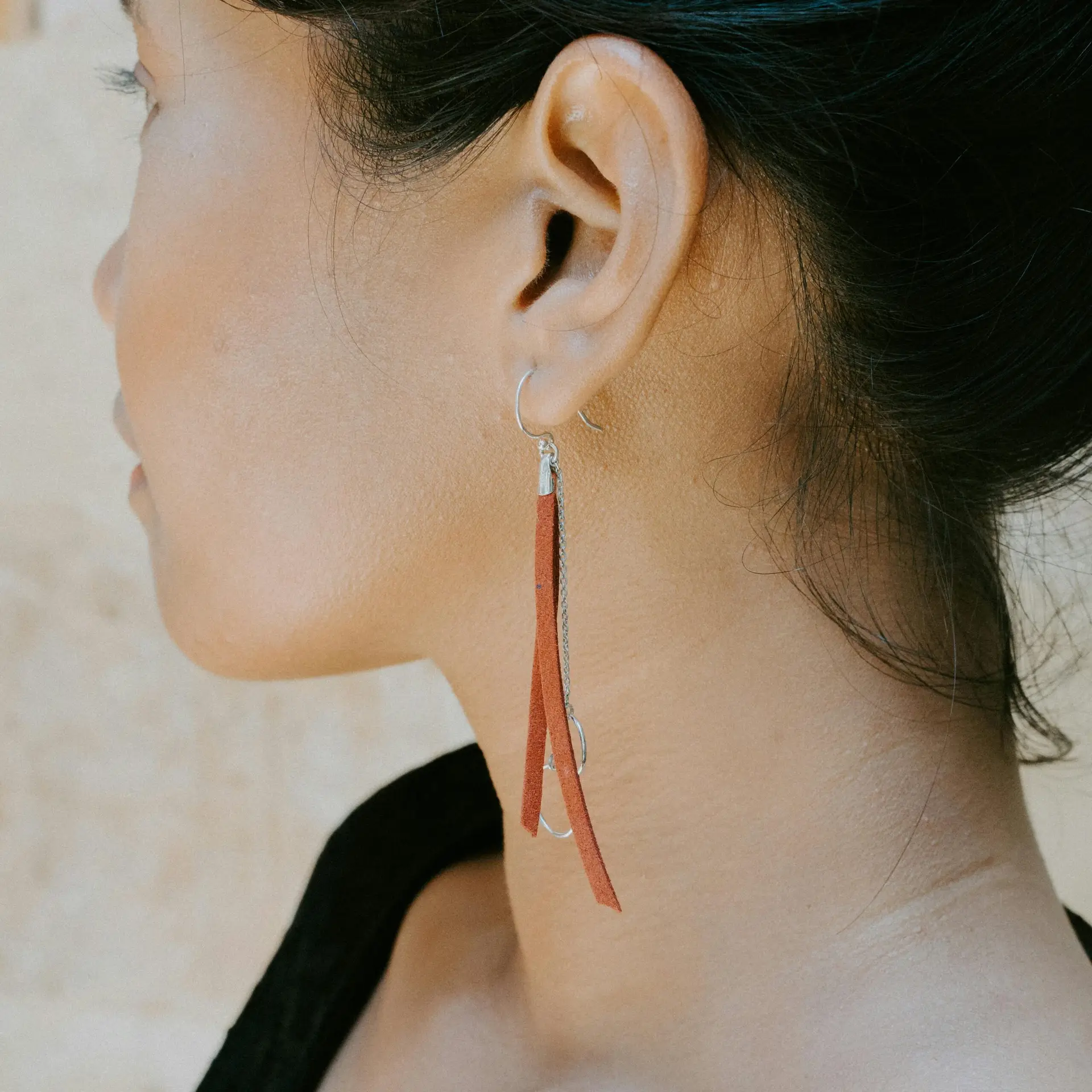
Introduction
Best Tinnitus Treatment Lakewood Ranch: Tinnitus—the perception of ringing, buzzing, hissing, or whooshing in the ears when no external sound is present—is one of the most frustrating and poorly understood conditions affecting millions nationwide. In Lakewood Ranch, Florida, persistent ear noise can disrupt work, interfere with sleep, and erode quality of life. Conventional treatments often focus on symptom masking—white‑noise machines, hearing aids, or medications—offering only temporary relief.
At Lavender Family Chiropractic in Sarasota, our philosophy is different. We recognize tinnitus is frequently rooted in dysfunction of the upper cervical spine—specifically at the atlas (C1) and axis (C2) vertebrae—which can impede blood flow, irritate nerves, and alter cerebrospinal fluid dynamics around the auditory system. By using precise, gentle upper cervical adjustments guided by advanced CBCT 3D imaging and Tytron functional nervous system scans, we correct misalignments, restore proper nerve signaling, and often achieve lasting reduction—or even elimination—of tinnitus.
In this comprehensive, 4,500‑word guide, you’ll discover:
- What tinnitus is, how it’s classified, and why it matters
- Anatomy deep‑dive: atlas, axis, arteries, nerves, and CSF pathways
- Mechanisms: how C1/C2 misalignments trigger or amplify tinnitus
- Our Upper Cervical Chiropractic approach at Lavender Family Chiropractic
- Advanced Diagnostics: CBCT Cone‑Beam CT and Tytron Infrared Thermography
- Step‑by‑Step Treatment Protocol with timelines and expected outcomes
- Lifestyle, nutrition, and home‑care strategies to support healing
- Patient Success Stories from Lakewood Ranch and surrounding areas
- Top 15 FAQs answered in depth
- Full list of SEO keywords to help you find us: chiropractor sarasota florida, chiropractor near me, upper cervical chiropractor near me, upper cervical chiropractic, vertigo doctor near me, migraine doctor near me
- All service areas we serve beyond Lakewood Ranch
- Call to Action at the end with scheduling links, website, and phone
Whether you’ve tried masking strategies for years without success or you’re newly diagnosed with tinnitus and seeking answers, this guide is for you.
1. What Is The Best Tinnitus Treatment Lakewood Ranch? What is Tinnitus?
Tinnitus is a symptomatic perception of sound without an external source. It is divided into two main types:
- Subjective Tinnitus
- The most common form (>95% of cases)
- Heard only by the patient
- Described as ringing, buzzing, roaring, pulsing, or clicking
- Objective Tinnitus
- Rare; examiner can sometimes detect it with a stethoscope
- Usually vascular (pulsatile) or muscular in origin
Why It Matters
Chronic tinnitus affects concentration, sleep quality, and emotional well‑being. Studies show up to 20% of adults experience some form of tinnitus, with 5–10% suffering severe, life‑altering symptoms. Left unaddressed, it can lead to anxiety, depression, and social withdrawal.
2. Classifications and Severity
Tinnitus can be further categorized by:
- Duration
- Acute: <3 months
- Subacute: 3–12 months
- Chronic: >12 months
- Pattern
- Constant: Present nearly all day
- Intermittent: Comes and goes
- Pulsatile: Beats in time with heartbeat
- Perceived Loudness
- Rated on a subjective scale (1–10), often worse in quiet settings
Understanding your type and pattern helps tailor treatment—especially when the underlying cause involves neck alignment.
3. Anatomy Deep‑Dive: Upper Cervical Structures
To grasp how neck alignment influences ear function, let’s examine critical anatomy:
3.1 Atlas (C1) and Axis (C2)
- Atlas (C1): Supports the skull, allowing nodding motion; houses the first cervical nerve root and the vertebral artery as it ascends to the brain.
- Axis (C2): Acts as a pivot for rotation; contains the odontoid process (dens) and the second cervical nerve root.
Even sub‑millimeter misalignments at these levels can alter biomechanics and stress surrounding tissues.
3.2 Vertebral Arteries
- Pass through transverse foramina of C6–C1, then curve medially behind the atlas to enter the foramen magnum.
- Supply blood to the brainstem, cerebellum, and inner ear structures (via the anterior inferior cerebellar artery branch).
Misalignment can compress or kink these arteries, leading to reduced perfusion and ischemic stress in auditory centers.
3.3 Dorsal Root Ganglia & Spinal Nerves
- The C1 dorsal root carries proprioceptive input from upper neck muscles—critical for posture and spatial orientation.
- Irritation here can send abnormal input to central auditory processing centers, perceived as phantom noise.
3.4 Cerebrospinal Fluid (CSF) Pathways
- CSF flows around the brain and spinal cord, cushioning and clearing metabolic waste.
- Upper cervical misalignments can impede normal CSF flow, slightly increasing intracranial pressure and sensitivity of auditory nuclei.
4. Mechanisms: How Misalignments Generate Tinnitus
Several interrelated mechanisms link atlas/axis dysfunction to ear noise:
- Vascular Compromise
- Kinking of vertebral arteries → decreased blood flow → ischemia of auditory structures → aberrant neural firing.
- Nerve Irritation
- Compression or stretching of C1/C2 nerve roots → abnormal signaling to the brainstem and auditory cortex.
- CSF Dysregulation
- Impaired CSF flow → changes in intracranial pressure → sensitization of auditory pathways.
- Muscular Tension & Trigger Points
- Neck muscle spasm (e.g., suboccipitals) can refer pain and dysfunction to the jaw and ear regions.
- Neuroplastic Changes
- Chronic abnormal input can cause the brain’s auditory centers to “rewire,” perpetuating tinnitus even after initial trigger is gone.
By realigning C1 and C2, we restore normal vascular, neural, and fluid dynamics—addressing the root cause rather than merely masking the symptom.
5. Upper Cervical Chiropractic Care Explained
Upper cervical chiropractic is a specialized sub‑discipline focusing exclusively on the C1–C2 region. Key features include:
- Precision: Guided by 3D CBCT imaging and thermography rather than guesswork.
- Gentleness: Low‑force adjustments—no twisting, popping, or cracking.
- Customization: Each adjustment vector, direction, and force is tailored to your exact misalignment measurement.
- Follow‑Up & Maintenance: Ongoing scans ensure the correction holds and adjustments can be fine‑tuned.
5.1 Technique Overview
- Patient lies face down or side‑lying on a specialized table.
- Doctor measures misalignment angles from CBCT and thermal asymmetries from Tytron.
- A spring‑loaded instrument delivers a precise impulse to the misaligned vertebra.
- The force is calibrated in Newtons—enough to shift the bone millimeters without discomfort.
6. Advanced Diagnostics
6.1 CBCT Cone‑Beam CT Imaging
- Provides three‑dimensional volumetric scans of the upper cervical spine.
- Detects rotational, lateral, and anterior‐posterior misalignments down to 0.1 mm.
- Software calculates deviation angles and suggests the exact vector for correction.
6.2 Tytron Infrared Paraspinal Thermography
- Measures skin‑surface temperature overlying the cervical musculature.
- Identifies “hot spots” indicating inflammation and nerve irritation.
- Baseline scan at intake, followed by scans every 4–6 visits to track improvements.
Together, these tools create an objective foundation—eliminating guesswork and ensuring each adjustment is data‑driven.
7. Our 4‑Phase Tinnitus Treatment Protocol
Phase 1: Comprehensive Intake & Baseline Scans
- Detailed history: onset, pattern, triggers, past treatments.
- CBCT scan to map bony misalignments.
- Tytron scan to locate neural inflammation hotspots.
- Postural and neurological exam to assess vestibular and proprioceptive function.
Phase 2: Data Analysis & Customized Care Plan
- Review CBCT angles (e.g., atlas rotated X° left, axis laterally shifted Y mm).
- Overlay Tytron heat maps to correlate nerve irritation with misalignment.
- Develop a personalized sequence of adjustments, specifying target vertebra, direction, and force.
- Educate patient on anatomy, mechanism, and expected timeline.
Phase 3: Gentle Precision Adjustments
- First adjustment typically occurs 24–48 hours after intake.
- Sessions last 15–20 minutes: quick scan check, single low‑force impulse realignment, post‑adjustment assessment.
- Patients often describe a “soft tap” or light pressure—no cracking or popping.
- Between visits, patients perform simple neck stability and posture exercises at home.
Phase 4: Follow‑Up, Maintenance & Prevention
- Tytron scans every 4–6 visits to confirm reduction in thermal asymmetry.
- CBCT repeated only if progress plateaus or symptoms return.
- Transition to a maintenance schedule: check‑ups every 3, 6, or 12 months based on individual stability.
- Lifestyle modifications: ergonomic adjustments, stress management, gentle stretching.
Expected Timeline
| Visits | Reason | Typical Outcome |
|---|---|---|
| 1–3 | Correct major misalignment | 20–40% reduction in tinnitus loudness. |
| 4–6 | Reinforce alignment gains | 40–60% reduction; improved sleep and focus. |
| 7–10 | Deep stabilization phase | 60–80% reduction; many report near silence. |
| 11+ | Maintenance & fine‑tuning | Sustained relief; addressing any flare‑ups. |
8. Lifestyle & Nutrition to Support Healing
While upper cervical adjustments address the structural root cause, complementary lifestyle and nutritional strategies can speed recovery:
8.1 Posture & Ergonomics
- Keep screens at eye level to avoid forward‐head posture.
- Use a supportive pillow that maintains neutral neck curvature.
- Take frequent short breaks to stretch and reset posture.
8.2 Stress Management
- Chronic stress can exacerbate muscle tension around C1/C2.
- Techniques: deep breathing, progressive muscle relaxation, mindfulness meditation.
- Aim for at least 10 minutes of stress relief exercises daily.
8.3 Nutrition & Hydration
- Anti‐inflammatory diet rich in omega‑3s (fish, flaxseed), antioxidants (berries, leafy greens), and magnesium (nuts, legumes) can reduce nerve irritation.
- Avoid excessive caffeine and sodium, which can heighten vascular pulsatility.
- Stay hydrated: CSF production relies on adequate fluid intake.
8.4 Gentle Exercise & Vestibular Rehabilitation
- Light aerobic activity (walking, swimming) promotes blood flow to auditory centers.
- Simple vestibular exercises (Brandt‑Daroff, gaze stabilization) can retrain the brain to ignore tinnitus signals.
9. Patient Success Stories
Samantha P., Lakewood Ranch
“After a rear‐end collision two years ago, I developed constant ringing. I’d tried ear drops, sound machines, even therapy, but nothing lasted more than a week. Dr. Lavender’s CBCT scan showed my atlas rotated 3° to the right and my Tytron map had a hot spot on the left. Three adjustments later, my tinnitus dropped from 7/10 to 2/10—and now, six months later, I’m at 0/10 most days. I finally sleep through the night without ear noise!”
Michael R., Bradenton
“I thought my tinnitus was permanent. Then I found Lavender Family Chiropractic. Their gentle, precise adjustments were painless. By visit five, the constant buzzing was down to occasional humming—and it’s stayed away for months. Highly recommend to anyone who’s tried everything else.”
Linda S., Parrish
“I was skeptical but desperate. Dr. Temple explained how neck alignment affects ear function better than any ENT doctor. The process was so comfortable—no popping or cracking—just a soft tap. My tinnitus is now barely noticeable, and I’ve regained my focus at work.”
Robert L., Venice (Age 62)
“Decades of construction work left my neck chronically stiff. Then tinnitus started six years ago and wouldn’t let up. I saw ENT specialists who offered masking devices and antidepressants. Nothing helped long‑term. At Lavender Family Chiropractic, the CBCT revealed a 2.5 mm anterior shift of C1. After six precision adjustments, my ringing went from an 8/10 to a 3/10. Three months later, I’m at 1/10—practically silent compared to before.”
Emily G., Osprey (Age 29)
“I developed tinnitus after a minor car accident. I was nervous about chiropractic because of stories of painful cracks, but here it was gentle. The Tytron scan highlighted nerve irritation at C2, and within four weeks, the constant buzzing faded to occasional chirps. Now I only notice it when I turn my head sharply—and I know exactly where to come if it flares up.”
Carlos M., Punta Gorda (Age 45)
“I work in a high‑stress finance job, and my tinnitus worsened under pressure. Dr. Guzinski not only adjusted my atlas but taught me ergonomics and stress‑relief exercises. Within two months, my tinnitus dropped by 70%, and my overall neck tension is gone. This holistic approach has truly transformed my life.”
These stories demonstrate the power of combining precise upper cervical adjustments with patient education, ergonomic strategies, and stress management—addressing tinnitus on multiple levels for lasting relief.
10. Top 15 FAQs Answered In Depth
1. What exactly causes tinnitus related to the upper cervical spine?
Tinnitus linked to the upper cervical spine stems from misalignments at C1 and C2 that can compress the vertebral arteries—leading to reduced blood flow to the inner ear—and irritate the C1/C2 nerve roots, which send abnormal sensory signals to the brain’s auditory centers. Additionally, misalignment can impede cerebrospinal fluid flow, changing intracranial pressure and sensitizing ears to phantom noise. By restoring alignment, we normalize blood, nerve, and fluid dynamics.
2. How is upper cervical chiropractic different from traditional neck adjustments?
Traditional chiropractic often uses general thrusts across the entire cervical spine, sometimes causing popping sounds. Upper cervical chiropractic zeroes in exclusively on C1 and C2 with ultra‑gentle, instrument‑delivered impulses. We don’t pop or twist; we apply low‑force, data‑driven corrections based on precise CBCT measurements and thermal scans, minimizing risk and maximizing accuracy.
3. How long before I feel an improvement in my tinnitus?
Many patients notice initial relief—often a 20–40% reduction in perceived volume—within the first 2–4 visits (about 2–4 weeks). Significant improvements (50–80%) typically occur by weeks 6–12. Individual responses vary based on chronicity, baseline misalignment severity, and adherence to home‑care recommendations.
4. Are the adjustments painful or uncomfortable?
No. Our adjustments use a spring‑loaded instrument calibrated in Newtons to deliver a brief, targeted impulse. Patients commonly describe the sensation as a light tap or gentle pressure. There’s no high‑velocity thrust, popping, or twisting, making it comfortable for all ages.
5. What can I expect at my very first appointment?
Expect a comprehensive intake (60–75 minutes) covering your medical history, tinnitus onset, and previous treatments. We’ll perform a CBCT 3D scan of your upper cervical spine and a Tytron infrared paraspinal thermography scan. You’ll then receive an explanation of your misalignments and a customized care plan.
6. How often will I need scans and adjustments?
- CBCT scans: Typically only at intake and as‑needed at major milestones (e.g., after 8–12 visits).
- Tytron scans: Every 4–6 visits to monitor thermal asymmetry and nerve irritation.
- Adjustments: Initially 2–3 times per week, tapering to weekly, then to maintenance visits every 3–6 months.
7. Can other treatments (e.g., hearing aids, sound therapy) be combined with upper cervical care?
Yes. While we focus on root‑cause resolution, complementary treatments like hearing aids, white‑noise machines, or cognitive behavioral therapy can provide additional relief during the early phase of structural correction.
8. Is there any risk of injury or complications?
Upper cervical chiropractic is extremely safe when performed by skilled practitioners. Our instrument‑based, low‑force technique avoids the risks associated with high‑velocity thrusts. We screen for contraindications, such as severe osteoporosis or unstable vertebral fractures, and refer out if necessary.
9. Does this treatment only help tinnitus?
No. Because upper cervical misalignments can also contribute to vertigo, migraines, neck pain, TMJ dysfunction, and even dysautonomia-related symptoms (like POTS), many patients experience multidimensional relief—improved balance, reduced headaches, and enhanced overall nervous system function.
10. Can children and seniors receive these adjustments?
Absolutely. The low‑force nature of upper cervical adjustments makes them suitable for pediatric and geriatric populations. We adjust force and vector based on age, bone density, and individual tolerance.
11. How do I maintain my progress after the initial correction phase?
We provide personalized home exercises focusing on neck stability, posture, and vestibular retraining. Ergonomic coaching—such as screen height adjustment and supportive pillows—also plays a key role. After stabilization, routine check‑ups every 3–6 months help ensure long‑term success.
12. What lifestyle changes support tinnitus reduction?
- Posture & Ergonomics: Keep your head aligned over your shoulders—avoid forward‑head posture.
- Stress Management: Daily mindfulness, deep breathing, or progressive muscle relaxation.
- Nutrition: Anti‑inflammatory diet high in omega‑3s, antioxidants, and magnesium; limit caffeine and sodium.
- Hydration: Adequate water intake supports healthy CSF production.
13. Will my tinnitus ever fully go away?
While individual outcomes vary, many patients achieve near‑complete resolution—70–90% reduction in perceived noise. A small subset with long‑standing neuroplastic changes may require ongoing maintenance but still experience substantial benefit compared to baseline.
14. What happens if my tinnitus returns or flares up?
We reassess alignment with a quick Tytron scan and possibly a CBCT if indicated. Minor flare‑ups often respond to a single “tune‑up” adjustment. We also revisit home‑care strategies to prevent recurrence.
15. How do I know if I’m a candidate for upper cervical chiropractic tinnitus care?
If you’ve tried masking strategies (sound therapy, hearing aids) or medications without lasting relief—especially if your tinnitus fluctuates with neck movement, stress, or jaw tension—you’re an excellent candidate. A complimentary consultation helps us determine your suitability.
11. Review of Key SEO Keywords
To make sure you can find us when searching online, here’s a recap of the essential terms woven throughout this guide:
- chiropractor sarasota florida
- chiropractor near me
- upper cervical chiropractor near me
- upper cervical chiropractic
- vertigo doctor near me
- migraine doctor near me
Using these keywords in your Google searches will lead you directly to Lavender Family Chiropractic, the region’s premier upper cervical specialists.
12. All Service Areas We Serve
While our office is based in Sarasota, we proudly welcome patients from:
- Lakewood Ranch (your local tinnitus specialist)
- Bradenton
- Parrish
- Ellenton
- Venice
- Osprey
- Punta Gorda
- St. Petersburg
- Siesta Key
- Longboat Key
- Lido Key
- Myakka City
No matter where you live in Sarasota or Manatee County, we’re here to provide compassionate, expert care.
13. Why Choose Lavender Family Chiropractic?
- Specialized Expertise in upper cervical chiropractic techniques
- State‑of‑the‑Art Technology (CBCT 3D imaging, Tytron thermography)
- Gentle, Precise Adjustments without high‑velocity popping
- Comprehensive, Patient‑Centered Care from a three-doctor team (Dr. Rusty Lavender, Dr. Jacob Temple, Dr. Will Guzinski)
- Holistic Approach integrating lifestyle, nutrition, and stress management
- Flexible Financing and superbill support for out‑of‑network insurance
14. Call to Action
If you’re ready to break free from the constant noise of tinnitus and address its true root cause, take the next step today:
Lavender Family Chiropractic in Sarasota, Florida, offers complimentary consultations to learn more about you. Click the link below!
https://intake.chirohd.com/new-patient-scheduling/724/lavender-family-chiropractic
Visit Our Website!
To explore our services, providers, and patient resources, go to
http://www.chiropractorsarasotaflorida.com
We Also Serve: Bradenton, Parrish, Lakewood Ranch, Ellenton, Venice, Osprey, Punta Gorda, St. Petersburg, Siesta Key, Longboat Key, Lido Key, Myakka City.
Phone: (941) 243‑3729
Don’t settle for masking strategies any longer. Discover how precise upper cervical chiropractic care can restore proper nerve and blood flow dynamics—quieting the noise and helping you reclaim peace and focus. We look forward to partnering with you on your journey to lasting relief.




